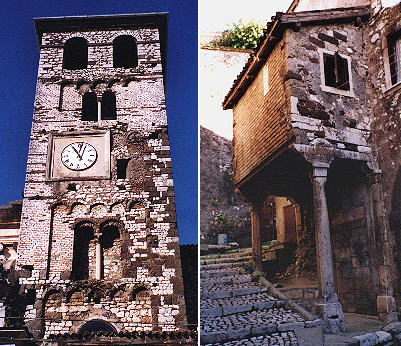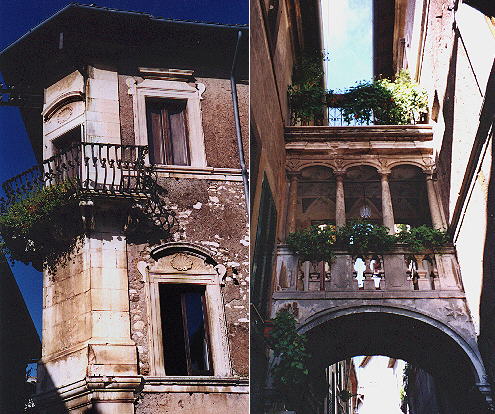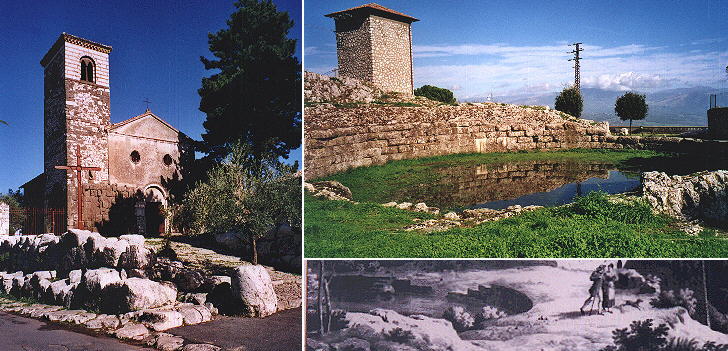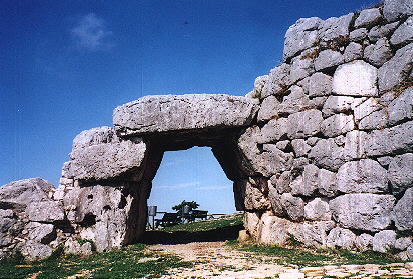  Ferdinand Gregorovius' Walks - Segni
From Valmontone Gregorovius rode towards Segni, the ancient Signia, said
to have been colonised by the Romans under Tarquinius Priscus. The town lies
on a mountain-slope with fine views of the valley and of Palestrina,
Genazzano, Paliano and Anagni.
When Gregorovius visited Segni most of the buildings had a black and white color as they were made by using white calcareous stones mixed with black tufa. This is still visible today especially in the bell tower of the cathedral. Gregorovius noted that Segni was much poorer than the towns in the valley and that there were no fine houses, although I feel the palace shown below deserved being mentioned.
Segni occupies only half of the area of Signia: at the top of the hill Gregorovius reached the church of S. Pietro, built on the foundation of a temple, where he noted its three kinds of masonry: polygonal blocks of limestone, rectangular blocks of tufa and medieval masonry.
Behind the church there is a Roman cistern which was used when Gregorovius saw it. The area around the church is even and there is a fine walk around the well preserved town walls of Signia. Gregorovius as many other travellers was mainly interested in seeing one of the old gates.
The gate, called Porta Saracena in medieval times, shows a kind of arch made by having the lateral walls gradually approaching. This gate was put in relation with the Mycenaean Gate of the Lions and it was thought of some possible links with that civilization. Further studies came to the conclusion that the polygonal walls of Segni and the other towns of the area were not so old to be put in relation with Mycenae. From Segni Gregorovius crossed the Volsci mountains to reach Norma. Introductory page on Ferdinand Gregorovius Valmontone Norma Cori Other walks: The Roman Campagna: Palestrina Genazzano Paliano Anagni The Ernici Mountains: Ferentino Alatri On the Latin shores: Anzio Nettuno and Torre Astura Circe's Cape: Terracina San Felice The Orsini Castle in Bracciano Subiaco, the oldest Benedictine monastery See my Home Page on Baroque Rome or my Home Page on Rome in the footsteps of an XVIIIth century traveller. |
All images © 1999 - 2003 by Roberto Piperno. Write to romapip@quipo.it



